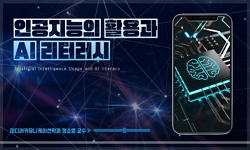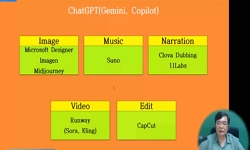본 연구는 대학에서 일본어를 가르치는 교수 및 강사 40명을 대상으로 챗GPT 활용에 대한 인식과 수업 활용 의지를 조사하였다. 연구 결과, 일본어 교수자들은 AI 활용 교육의 필요성에 공감하...
http://chineseinput.net/에서 pinyin(병음)방식으로 중국어를 변환할 수 있습니다.
변환된 중국어를 복사하여 사용하시면 됩니다.
- 中文 을 입력하시려면 zhongwen을 입력하시고 space를누르시면됩니다.
- 北京 을 입력하시려면 beijing을 입력하시고 space를 누르시면 됩니다.

챗GPT 일본어 수업 활용에 대한 대학교수 인식 연구 = A Study on University Professors' Perceptions of ChatGPT Utilization in Japanese Language Teaching
한글로보기부가정보
국문 초록 (Abstract)
수업에서 챗GPT를 활용하지 않는 주요 이유로는 저작권 문제 및 결과 신뢰성에 대한 우려뿐만 아니라, 외국어 학습의 특성상 학생들의 창의적인 문장 구성 능력이 저하될 가능성이 지적되었다. 또한 많은 교수자가 챗GPT를 수업에 활용하고 싶어 하지만, 구체적인 활용법이나 수업과의 융합 방법을 알지 못해 어려움을 겪고 있었다.
특히 챗GPT를 일본어 수업에 활용할 의사는 챗GPT 평소 사용 경험, 사용 빈도, 그리고 AI 활용교육 수강 여부에 영향을 받는 것으로 나타났다. 따라서 효과적인 AI 활용 수업을 위해서는 교수자 대상 챗GPT 등 AI 활용교육을 강화하고, 일본어 및 일본문화 수업에서의 구체적인 활용 가이드라인을 개발할 필요가 있다. 또한 다양한 교과목과 융합된 챗GPT 활용 사례를 적극적으로 공유하여, 학생들의 챗GPT 활용 경험과 학습 효과를 분석하고, AI 기반 일본어 교육의 실효성을 높이는 방안을 모색해야 한다.
본 연구는 대학에서 일본어를 가르치는 교수 및 강사 40명을 대상으로 챗GPT 활용에 대한 인식과 수업 활용 의지를 조사하였다. 연구 결과, 일본어 교수자들은 AI 활용 교육의 필요성에 공감하면서도, 실제 수업에서의 사용 경험은 타 교과에 비해 낮은 편이었다. 그러나 37.5%의 교수자는 챗GPT를 거의 매일 활용하며, 단순한 정보 검색을 넘어 작업 지원 및 수업 활동에 활용하여 높은 만족도를 보였다. 반면 절반 정도는 챗GPT 활용에 적극적이지 않았으며, 12.5%는 거의 사용하지 않는 등 양극화된 양상을 보였다.
수업에서 챗GPT를 활용하지 않는 주요 이유로는 저작권 문제 및 결과 신뢰성에 대한 우려뿐만 아니라, 외국어 학습의 특성상 학생들의 창의적인 문장 구성 능력이 저하될 가능성이 지적되었다. 또한 많은 교수자가 챗GPT를 수업에 활용하고 싶어 하지만, 구체적인 활용법이나 수업과의 융합 방법을 알지 못해 어려움을 겪고 있었다.
특히 챗GPT를 일본어 수업에 활용할 의사는 챗GPT 평소 사용 경험, 사용 빈도, 그리고 AI 활용교육 수강 여부에 영향을 받는 것으로 나타났다. 따라서 효과적인 AI 활용 수업을 위해서는 교수자 대상 챗GPT 등 AI 활용교육을 강화하고, 일본어 및 일본문화 수업에서의 구체적인 활용 가이드라인을 개발할 필요가 있다. 또한 다양한 교과목과 융합된 챗GPT 활용 사례를 적극적으로 공유하여, 학생들의 챗GPT 활용 경험과 학습 효과를 분석하고, AI 기반 일본어 교육의 실효성을 높이는 방안을 모색해야 한다.
다국어 초록 (Multilingual Abstract)
This study surveyed 40 university professors and lecturers teaching Japanese language courses to explore their perceptions and willingness to use ChatGPT in their classes. While most instructors acknowledged the importance of integrating AI into educa...
This study surveyed 40 university professors and lecturers teaching Japanese language courses to explore their perceptions and willingness to use ChatGPT in their classes. While most instructors acknowledged the importance of integrating AI into education, the usage rate of ChatGPT in their courses was lower compared to other subjects. Nonetheless, 37.5% of instructors reported using ChatGPT almost daily--not just for ‘information searches’ but for ‘task support’ and ‘class activities,’-and expressed high levels of satisfaction. However, about half of the instructors were not proactive in using ChatGPT, and 12.5% rarely used it, indicating a polarized response. Concerns regarding the integration of ChatGPT into the classroom included copyright issues doubts about its accuracy, and fears that it might hinder students' creativity, especially in language learning, where independent sentence construction is encouraged. While many instructors showed interest in using ChatGPT, they lacked clear ideas on how to integrate it into their teaching. The study found that instructors' experience with ChatGPT and related training significantly influenced their willingness to adopt it in their teaching. To enhance AI-based education in Japanese language courses, it is essential to provide more instructor training, establish clear guidelines for ChatGPT usage in language and culture courses and share practical examples. By analyzing students' experiences with ChatGPT, educators can better assess and improve the effectiveness of AI-based language education.
동일학술지(권/호) 다른 논문
-
한일 대학생 교류 프로그램의 교육적 효과에 관한 일고찰 ― 활동 보고서 분석을 중심으로 ―
- 한국일어교육학회
- 김혜연
- 2025
- KCI등재
-
専攻基礎科目「日本語入門」における ティーム・ティーチングの実践報告 ― 「活動」の時間を中心に ―
- 한국일어교육학회
- 나카무라 유리
- 2025
- KCI등재
-
AI 도구를 활용한 일본어 작문 교육 방안 연구 ― 영상 자막 번역 프로젝트 수업을 중심으로 ―
- 한국일어교육학회
- 배소연
- 2025
- KCI등재
-
持続可能な開発のための教育(ESD)を目的とした内容言語 統語型学習(CLIL)のモデル開発 ― 韓国人大学生を対象とするCLILの理論的枠組み構築と妥当性の検証 ―
- 한국일어교육학회
- 이이호시 카즈야
- 2025
- KCI등재




 KCI
KCI KISS
KISS






